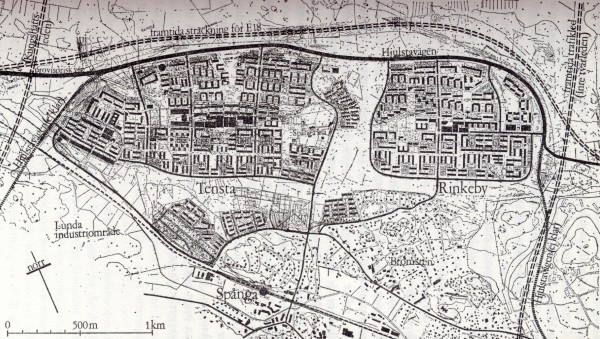My term project examines the use of audio in urban space as a means for delivering and sharing information and for creating the conditions for participation in community. This sound project focusing on two areas
– history
– culture
This project is inspired by a found reel-to-reel tape containing an interview with exiled Somalian writer Nuruddin Farah (b. 1945). On the tape (made sometime in the mid-1980s in Sweden), Farah speaks in English of his writing, as well as the Somalia he grew up in and of the diaspora and his exile. Today the Somalian diaspora is an important part of the identity and culture of Tensta. But how is that connection developing today as a place-dependent culture and what are the media available to it?
The reel-to-reel tape recorder is an early example of read/write media. I would like to extend this read/write idea as a way of framing contemporary Tensta. Firstly by the digitization of historic material and making it available to all. Secondly by making it possible for the Somalian culture of Tensta to be heard in the broader national and international arenas. This will be accomplished in this project in two ways:
1. An audio installation in Tensta Konsthall centered on the complete digitized recorded interview with Nurruddin Farah found on the reel-to-reel tape . I want to make this interview freely available to the Somalian community in Tensta. The interview will be available as an Mp3 download online from a QR-code produced for the installation and distributed on cards in Tensta Konsthall.
2. Building a website where audio of Tensta stories can be uploaded and played in the installation at Tensta Konsthall. I intend to create some sound pieces myself by speaking to locals in Tensta but the installation will allow people to record their own storied in Tensta Konsthall.
I want to suggest a continuity between Farah’s stories and the Somalian community in Tensta. Subjects such as Islam, Patriarchy, Family, Exile, Literature, Education and the Culture are themes that could be considered in the installation.
I plan to support the audio content of the installation with a hashtag cloud on a screen using the #Tensta tag and gathering tweets in real time over the duration the installation is in place. Tweets about “#Tensta”
Tweets by @JimBarrettThe principle; of read/write culture, of the invisibility of locally created/sourced information is the focus I am trying to get at. I suppose that is what graffiti is on one level, as art and as information. I would love to do a graffiti project, but its not very legal and I am not an artist in that sense. Instead its digital graffiti and the text is made of voices. But how can I make a medium for the voices, how to collect or channel them and then give them space in the konsthall or in a series of stations or points around Tensta.
More police being deployed in Tensta and “300 professional criminals” being targeted in the area http://www.svt.se/nyheter/regionalt/abc/fler-poliser-i-tensta-och-rinkeby
I just wonder what the narrative is from the people, the youth in the area and how such an example can be used to create a medium for expression?


